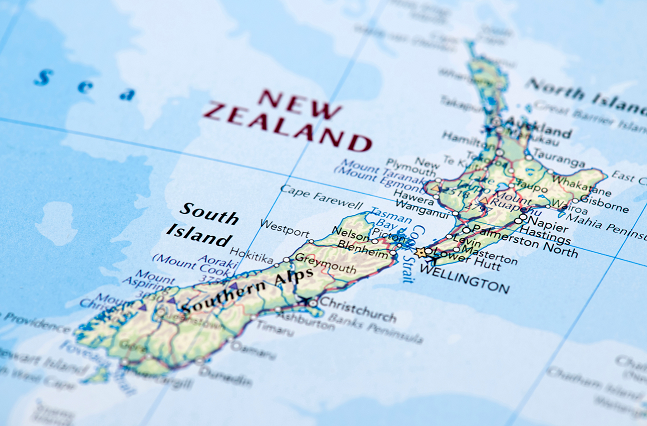Critical literacy: a pathway to understanding in Aotearoa New Zealand's histories curriculum
By Editor on June 23, 2023 in Curriculum
This is the third blog in Renée's critical thinking series. She explores the crucial role critical literacy and the inquiry practices of Aotearoa New Zealand’s histories curriculum play in the vision of the future.
Picture this: It’s 2028, and you’ve been implementing Aotearoa New Zealand’s histories curriculum by drawing on critical pedagogies for five years. You’re sitting in your classroom listening to your students talk as they learn, and you can hear them say things to each other like:
“It’s so interesting how this version of the story emphasises the role of Hone Heke, I wonder why that is?”
“I’m not sure that’s a reliable source of information, why do you think it is?”
“Yeah, but why do you think that?”
All your hard work in teaching them to think like an historian and the links you’ve made to critical literacy across the curriculum are bearing fruit. Life is good.
This is a vision of the future of education I think about a lot. The thought of seeing and hearing students across Aotearoa New Zealand participating and acting as “critical, informed, and responsible citizens” as they engage with their histories is one of the things that gets me out of bed in the mornings. In this third blog of my critical thinking series, I want to explore the crucial role critical literacy and the inquiry practices of Aotearoa New Zealand’s histories curriculum play in this vision of the future.
I see many of the inquiry practices of Aotearoa New Zealand’s histories Do strand in this description. Exploring historical relationships, identifying sources and perspectives and interpreting past decisions and actions helps us to understand that historical sources are constructed. These skills help us to realise that all texts are inevitably biased in one way or another and that some voices are included and others excluded. We have opportunities to interrogate the reasons for this and to construct and analyse our own texts. As we do this, we consider how our own worldview and biases position the reader.
Developed over time, these skills become a way of looking at the world, allowing us to understand that “the course of Aotearoa New Zealand’s histories has been shaped by the use of power” and that our world today continues to be shaped by the use of power. It gives us the tools to critique those who hold power and to speak our truth to them.

So, what are the skills in the Do strand and how might we implement them in our classrooms? Identifying and exploring historical relationships is about understanding that our stories about the past are constructed and that one person will construct their story a little differently to the next. A simple way to look at this is in sequencing events and thinking about them through different historical concepts- cause and effect, change and continuity, the past and the present and, significance.
Interpreting past experiences, decisions and actions involves making ethical judgements about the past based on what we know from evidence and empathising with situations and people’s values at the time. It is about applying our understanding of the time to interpret the choices of people in the past without judging through the lens of our own, contemporary values. It helps us to understand our own values in the light of those in the past and to suspend judgement to explore different perspectives.
The final aspect of the Do strand, and the one that I think goes right to the heart of the disciplinary skills of history, is identifying sources and perspectives. This inquiry practice requires us to look critically at a range of historical sources to give us a broad vision of the past, including mātauranga Māori sources and approaches. The centrality of mātauranga Māori sources is an invitation to include voices that have been marginalised in our histories by those who have held power. Engaging with a broader range of perspectives and thinking critically about them goes to the heart of the intent of this curriculum. This key skill addresses the varied quality of understanding of our histories and emphasises the role of critical literacy in empowering our ākonga to successfully navigate the 21st century.

Key to the success of this learning is the weaving of the strands of the curriculum. When we, as teachers, help our students to develop the disciplinary skills of history embedded in the Do strand and focus those skills on the contexts embedded in the Know strand, we empower our students to understand the big ideas which overarch the histories curriculum. It is this weaving of the strands of the histories curriculum that empowers our ākonga to know themselves and their places, to develop a sense of belonging and to participate in our society as “critical, informed, and responsible citizens.” In the words of those well-known educational theorists, Supergroove, “you’ve got to KNOW to UNDERSTAND” I would argue that you also have to DO. I encourage you to connect with critical pedagogies and apply them to Aotearoa New Zealand’s histories curriculum to empower and enrich the learning of all our ākonga so they can thrive in our complex world.
If you are interested in developing your skills to teach the inquiry practices of the Do strand and foster critical literacy in your classroom, contact Renée to discuss PLD options.
References
Centre for the Study of Historical Consciousness. Historical thinking concepts.
Keen to find out more?
Other articles you might like
Amidst the global interest in AI and ChatGPT, this blog delves into why critical thinking is not just important but absolutely crucial for our learners and our society.
Renée demonstrates critical thinking skills through different approaches providing insights on the impacts on learners in a classroom.
So, you’re going to teach Aotearoa NZ's histories…
